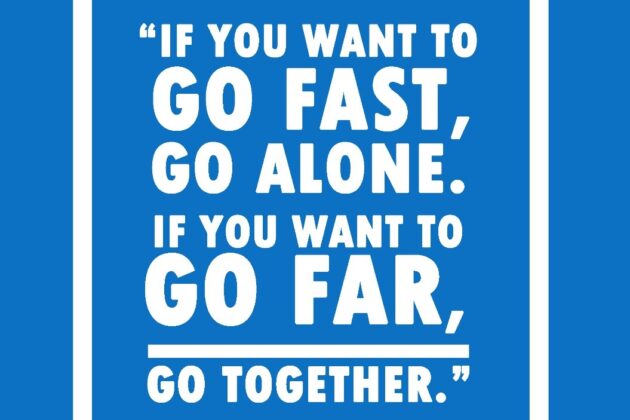We recently spoke with our colleagues at New Jersey Voluntary Organizations Active in Disaster (NJVOAD) after Hurricanes Harvey, Irma, and Maria devastated Texas, Florida and Puerto Rico, respectively.
NJVOAD recognized the lessons from New Jersey’s experience with Hurricane Sandy were essential to future disaster response and relief efforts, and brought together their members for a day of reflection, learning, and to start the process of ensuring that those lessons would be implemented in future disaster responses. Linda Hardy shares the work that came out of NJVOAD’s Call to Collaboration and how their system improvements are benefitting communities thousands of miles from New Jersey.

There’s a proverb that says, “If you want to go fast, go alone. If you want to go far, go together.” In the devastating aftermath of Hurricane Sandy, all anyone knew for sure when looking at the depth and extent of need, was that those looking to help needed to go — now. Survivors needed immediate help, and time to plan out the entire recovery process wasn’t an option.
But as it goes with all recoveries, there are lessons to be learned about what went well and what didn’t, and questions raised about what could be done in the future to try and remedy some of those setbacks. Those were exactly the conversations New Jersey Voluntary Organizations Active in Disaster (NJVOAD) sought to have at their Call to Collaboration conference held in October of 2015.
The conference brought together stakeholders from various organizations that helped, and in some cases, were still helping with recovery three years after Sandy. The goal was to have conversations that would seek to find these “lessons learned” and brainstorm ways to help improve future disaster response and recovery.

Discussions addressed topics such as funding advocacy, continuity of survivor services, communication dissemination, feeding and sheltering. From this event, several working groups were formed to continue those conversations and create potential solutions to the discovered pitfalls.
One such working group focused on donations and volunteer management. The group knew that after disasters there is an outpouring of help being offered by people, but there are some serious gaps in how to best capture and direct this goodwill in a positive and productive way.
Instead of receiving material donations that sometimes couldn’t be used or distributed, what was the best way to collect and organize those donations, or better yet, educate the public on the benefits of giving financial donations?
Continued discussions by this group led to NJVOAD’s inclusion in the State’s Donations Management Annex. Because of this partnership, official messaging from the State during the recent 2017 hurricanes directed the public to HELPNJNOW.ORG — a website developed and maintained by NJVOAD, in partnership with the NJ Office of Emergency Management and the Governor’s Office of Volunteerism — which educates people on disaster preparedness and the best ways to help after a disaster.

A disaster case management working group was also formed. Many different organizations helped with the working group after Sandy, and the collective learning and wisdom of those organizations resulted in the building of two key resources.
First, the group created a Disaster Recovery Resource guide to inform and improve the recovery planning efforts of future disaster survivors. This resource has been utilized in multiple disasters and became the foundation of Texas’s Hurricane Harvey Recovery Guide.
Second, with the goal of minimizing the abundance of paperwork survivors are required to fill out to receive services after a disaster, a common screening form was created to be shared with the numerous organizations responding to meet the immediate needs of survivors and improve the likelihood of an informed placement with the most appropriate provider. This form was recently used in Texas and Florida by one of the partnering organizations during their response to Hurricanes Harvey and Irma.
Deliverables such as these are just the beginning of what can be done with the collective knowledge and experience of veteran disaster organizations, and the conversation is just beginning. The hope is that with every effort to work together, communities affected by future disasters will see smoother, shorter and more effective overall recoveries.
To find out more about NJVOAD and how your organization can get involved, visit njvoad.org.
 Linda Hardy is a former Disaster Resiliency Coordinator with NJVOAD. In her three years with NJVOAD, she has supported long-term recovery groups and regional VOADs and COADs (Community Organizations Active in Disaster) as they sought to help NJ residents recover from Hurricane Sandy and prepare for future disasters.
Linda Hardy is a former Disaster Resiliency Coordinator with NJVOAD. In her three years with NJVOAD, she has supported long-term recovery groups and regional VOADs and COADs (Community Organizations Active in Disaster) as they sought to help NJ residents recover from Hurricane Sandy and prepare for future disasters.
